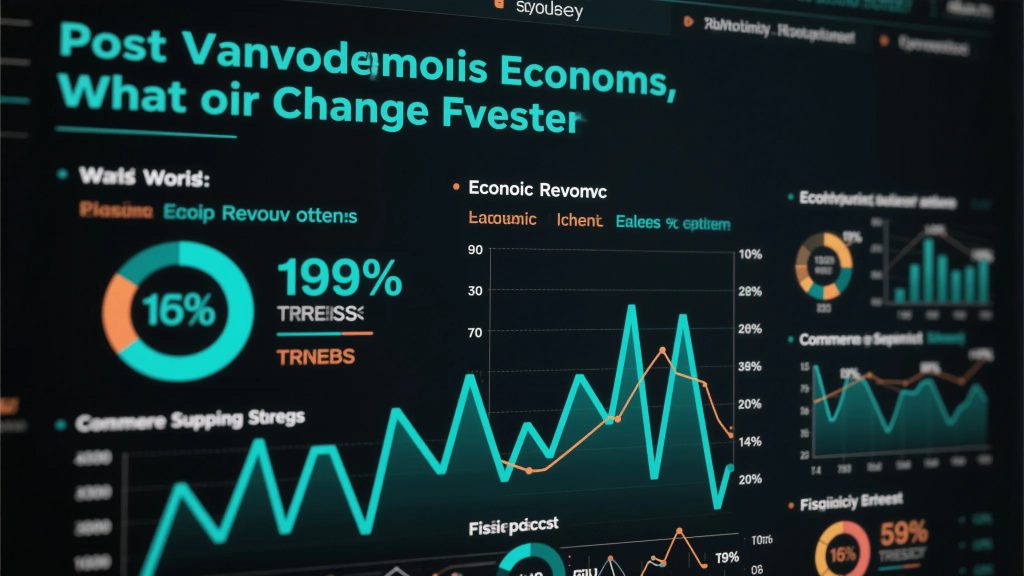
Post-Pandemic Economics: What Changed for Investors?
Economic Recovery Outlook Post-Pandemic
The current economic recovery outlook reveals a complex landscape of uneven growth across sectors and regions. While some industries have rebounded strongly, others continue to struggle with pandemic-induced structural changes. Investors must navigate this patchwork recovery with careful attention to regional variations and sector-specific dynamics.
When analyzing the economic recovery outlook, professionals examine multiple indicators including GDP growth rates, business formation statistics, and capacity utilization measures. The most insightful approaches compare current recovery patterns to historical post-crisis rebounds, identifying both similarities and unprecedented aspects of today’s environment.
Inflation Trends in the New Economic Era
Post-pandemic inflation trends have surprised many economists with their persistence and global nature. What began as temporary supply chain disruptions has evolved into more entrenched inflationary pressures across services and durable goods. The interaction between constrained supply and robust demand continues to challenge traditional monetary policy approaches.
Understanding current inflation trends requires examining both cyclical factors and structural changes in the global economy. The shift toward deglobalization, rising energy transition costs, and demographic changes all contribute to a potentially higher inflation regime going forward. Investors must adjust their strategies accordingly.

Labor Market Data and Its Implications
The latest labor market data shows remarkable resilience in employment figures but concerning productivity trends. While unemployment rates have returned to pre-pandemic levels in many economies, workforce participation patterns have changed permanently in some sectors. The rise of remote work and the “great resignation” continue to reshape business operations.
When interpreting labor market data, analysts must look beyond headline numbers to wage growth composition and job quality metrics. The most comprehensive assessments examine regional disparities and occupational segmentation to identify emerging opportunities and risks in the post-pandemic job market.
Consumer Spending Shifts and Opportunities
Post-pandemic consumer spending shifts reveal lasting changes in behavior patterns across generations and income groups. The acceleration of e-commerce adoption, preference for experiences over goods, and focus on health/wellness spending all present investment opportunities. These trends appear more structural than cyclical in nature.
Tracking consumer spending shifts requires analyzing both aggregate expenditure data and micro-level purchasing patterns. The most successful investors combine traditional economic indicators with alternative data sources like credit card transactions and mobility patterns to gain real-time insights into changing behaviors.
Fiscal Policy Effects on Investment Landscape
The unprecedented scale of pandemic-era fiscal policy effects continues to ripple through global markets. From infrastructure spending to industrial policy initiatives, government actions now play a larger role in shaping economic outcomes than at any time in recent history. These interventions create both winners and losers across sectors.
Assessing fiscal policy effects requires understanding how different stimulus measures interact with private sector dynamics. The most thorough analyses examine multiplier effects, crowding-out risks, and implementation timelines across various policy programs. Investors must stay attuned to these developments.
Building a Post-Pandemic Investment Framework
The most successful investors combine analysis of the economic recovery outlook with understanding of inflation trends. They monitor labor market data while tracking consumer spending shifts and assessing fiscal policy effects.
This comprehensive approach helps navigate the complex post-pandemic economic landscape. Regular strategy reviews ensure portfolios remain aligned with evolving conditions across these interconnected dimensions.
Implementing Resilient Investment Strategies
Proper implementation requires coordination between portfolio managers, economic analysts, and sector specialists. Asset allocations must reflect both current economic realities and longer-term structural shifts emerging from the pandemic. Beginning with clear investment objectives ensures consistency during ongoing market volatility.
By understanding these post-pandemic economic forces, investors can position their portfolios to capitalize on new opportunities while managing emerging risks. The combination of disciplined analysis and flexible execution creates pathways to success in this unprecedented environment.


